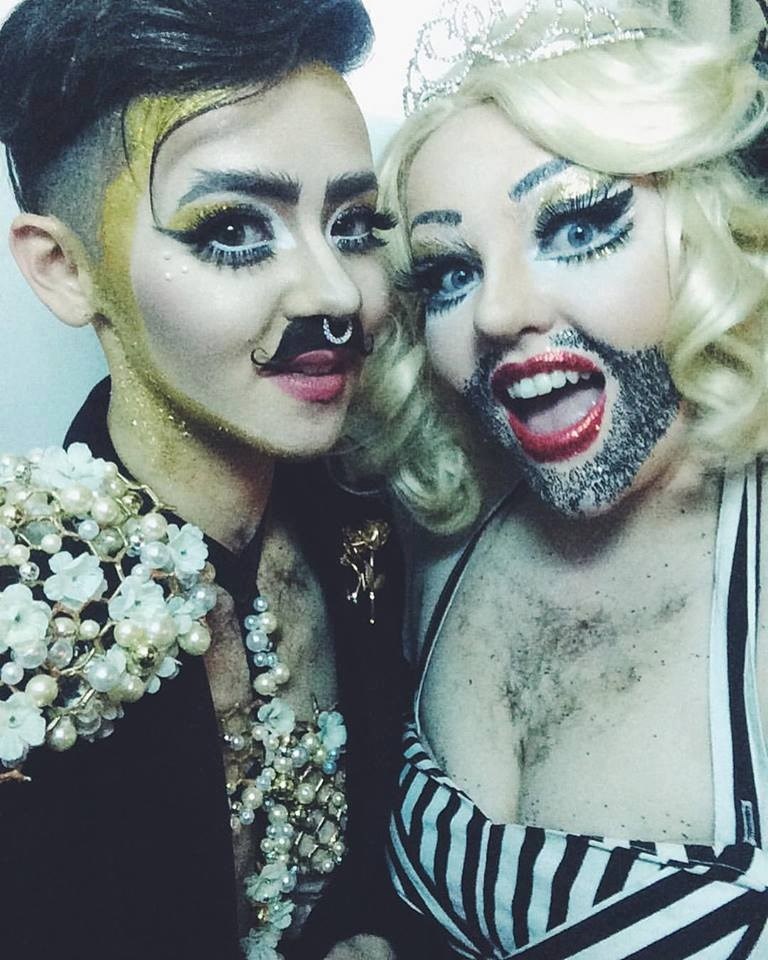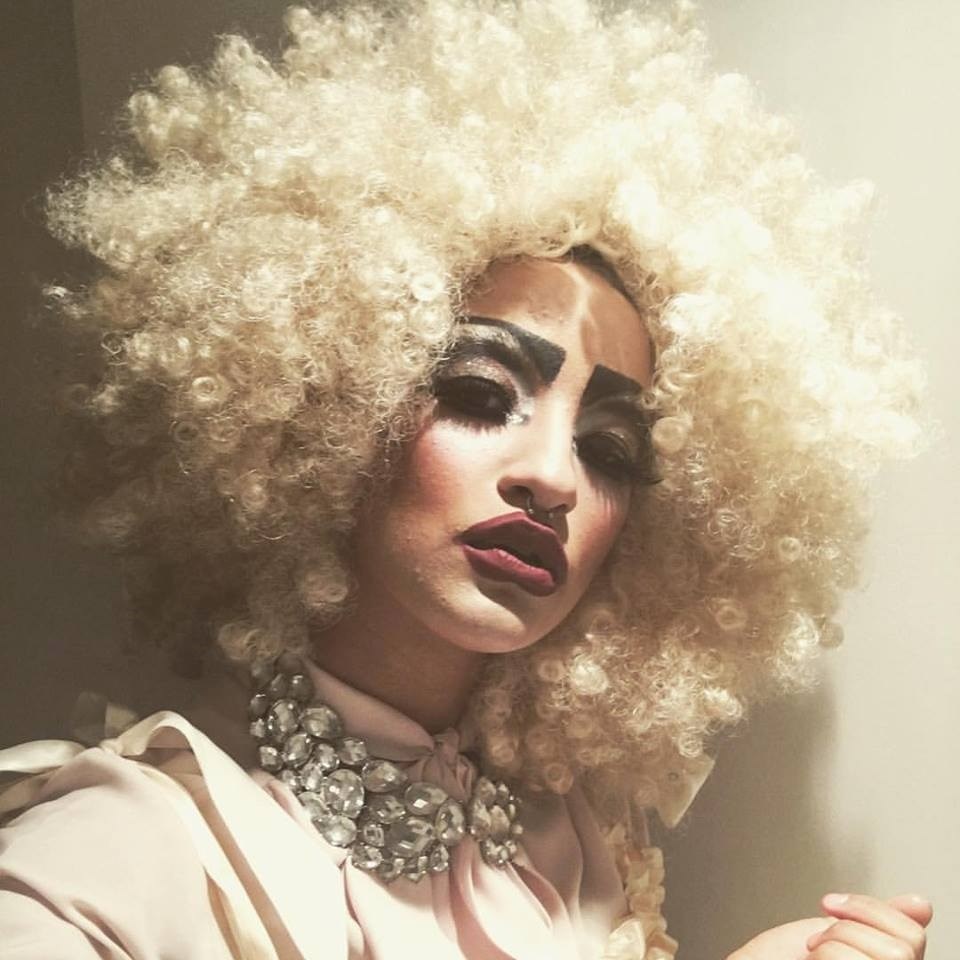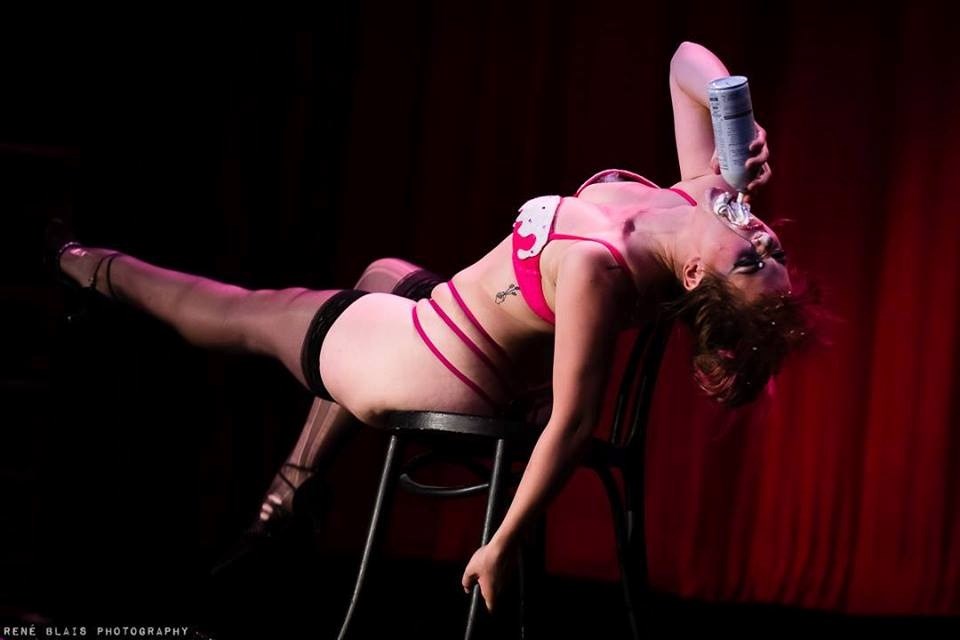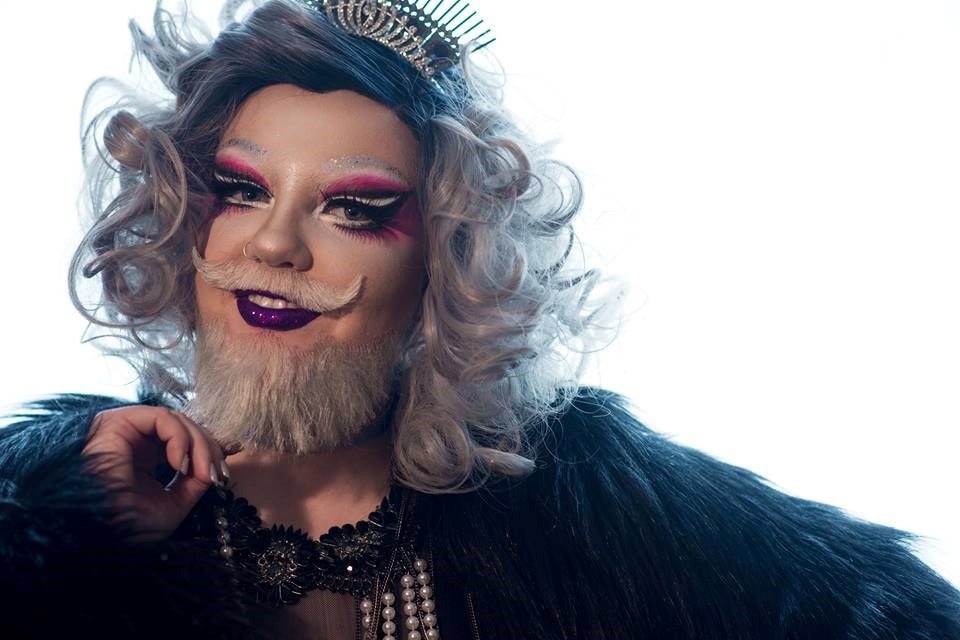This story is the third in a five-part series called Underground Vancouver, delving into little-known subcultures in and around the city.
Drag in Vancouver is starting to see more variety within gender transformations – specifically, fem- or non-masculine-identifying performers using drag to explore gender in a less obvious way.
According to Molly Sjerdal, AKA Grimm, drag should be able to represent more than a thin, white, masculine body, which is why they started doing drag about two years ago with their friend, Rose Butch, at Man Up’s Amateur Hour. “We weren’t seeing our bodies on stage, I wasn’t seeing anyone plus-sized, and I wasn’t seeing femininity explored, or anything really going between masculine and feminine,” says Sjerdal. “So when we had the opportunity to perform at Amateur Hour, we were like, Okay we’re gonna go and it’s gonna be this, like, gender explosion and we’re gonna say ‘Screw the binary’ and come up with something new that people hadn’t really seen.”
Grimm’s and Rose’s performance must have connected with some people who were feeling the same way, as they went on to win Amateur Hour, then both received the title of Mr/Ms Cobalt – Rose in 2015 and Grimm in 2016.

“We need more variety,” says Sjerdal. “It’s really cool to see folks that aren’t just interested in seeing male-to-female or female-to-male, but seeing what other kinds of transformations we have and what people interpret drag as.”
Sjerdal says their drag experience is much different from a “traditional” drag queen or drag king, because they are exploring gender and femininity as a person who is already feminine presenting. “I think because I am a female-bodied person and I am a queer person, I don’t experience the same cultural aspects that most drag queens do,” they said. “But in terms of the actual art of drag, I feel like we’re all on the same playing field. I still do a physical transformation with my body; it’s just in a different way.”
Sjerdal says transforming into Grimm is like becoming a different person, even though their face and body are already feminine. “Sometimes when I’m shopping, it’s a fine line [between] ‘Is that for Grimm or is that for me?’”
Sjerdal believes drag is a really interesting way to explore femininity. “In a patriarchal society that doesn’t value femininity, I think that we can actively make the point [of] showing just how feminine we can be. Or I can take what you think is going to be traditionally feminine and put on a beard. There’s something about really thinking about gender that I think is important.”
Helen Proskou, also known as their drag persona, Femanáde, started performing at Man Up a little over a year ago, and found that they were accepted into the community fairly quickly. “The community is really accepting. You can really be yourself.”
Femanáde’s drag is hard to define. They can do non-binary performance, to male transformation, or female transformation. “I like that I can change gender roles: I can be a woman, I can be a man, I can be a lion. I would say my drag is non-binary, not really a drag queen or a drag king.”
For Proskou, drag is a way to explore their own gender.

“When I do male drag, there’s the physical transformation: I bind, stuff myself with a packer; I work on my stance, how I talk, how I move, how I gesture. [When I’m] female, I’m more dainty, dance-y, lovey-dovey. I accentuate everything and make my hair really big.”
Proskou feels there is equal opportunity for all drag performers in the city – you just have to put yourself out there and ask. “All my life, I’ve always had to prove myself. I come from a really small town where there’s, like, five black people,” they said. “I keep going, ‘I want to show people it gets better if you work hard.’”
Ady McLeod, AKA Ruby Slickeur, started exploring drag two years ago, when she wanted to bring elements of drag and gender performance into her burlesque. “I had been interested in doing more queer shows. I found that in the burlesque scene, it was kind of tough to bring queerness into my performance, especially because I am quite fem,” she says. “At the time, burlesque was incredibly heteronormative, due to the outward perception of the audience, and I was getting more and more aggravated about that.”
For McLeod, drag was a way to explore her femininity after coming out of a bad relationship. “I was kind of lost, and it was easier to throw myself into discovering who I was as a performer,” she says.
Coming into drag as a burlesque performer, with elements of clowning in her performances, McLeod’s drag experience has been quite a bit different from Femanáde’s or Grimm’s. She hasn’t had many opportunities to do drag outside of East Van, and has trouble with other performers accepting her as a queen. “Part of that is probably because drag isn’t the main medium I use to perform. I think that there’s a possibility of a little bit of intimidation [as well],” she says. “I’ve been in a lot of gay male dominated places where there's kind of like 'ew gross' towards the female body and female nudity.”

McLeod says the biggest difference between herself and other drag performers is that her performances include female nudity, which she doesn’t think would be welcome in the West End or in drag shows that are more traditional than Man Up. “I feel like there’s a bit of segregation between the West End scene and the lesbian, more queer, non-binary gender-fluid side of culture on the East Side,” she says. “I think that performers like Grimm and Rose Butch and Ponyboy, who are starting to bridge that gap, are starting to learn from both queens and other queer performers, but it would be cool to see that expanded. I feel like this is just the beginning.”
McLeod and Sjerdal both find it can be hard to relate to drag queens because they are not a part of the gay male experience. “I saw [some of the queens] much more easily interacting with other gay men or drag queens – even the more masculine-presenting drag performers,” she says. “I’ve seen a lot of drag queens feel more comfortable approaching a masculine energy, because it’s what they’re used to.”
McLeod thinks drag is a really interesting way for women to approach their relationship with gender. “Why can’t women explore their own femininity through drag and yet men can? I think that’s a stupid boundary to make. I’ve heard drag queens say that lady queens aren’t real queens, and I think that’s setting another boundary on women being able to explore their own relationship with their gender.”
McLeod thinks more women should approach drag as a potential art form through which to explore femininity and what “ultra-feminine” means. “I think that’s what drag serves to do, is blow up gender in a way that allows us to explore its elements. I think that more women should look into doing that.”


